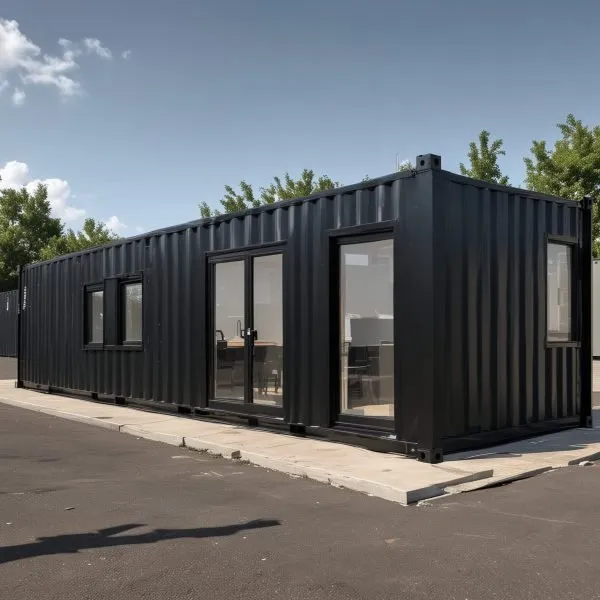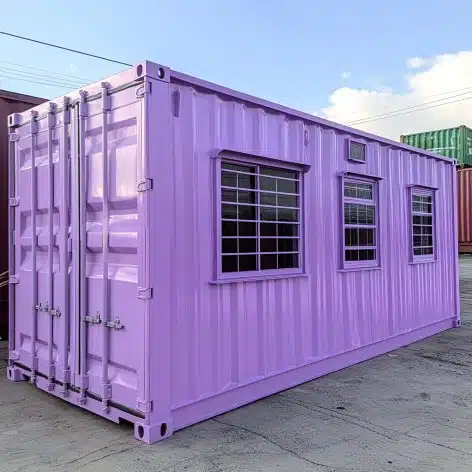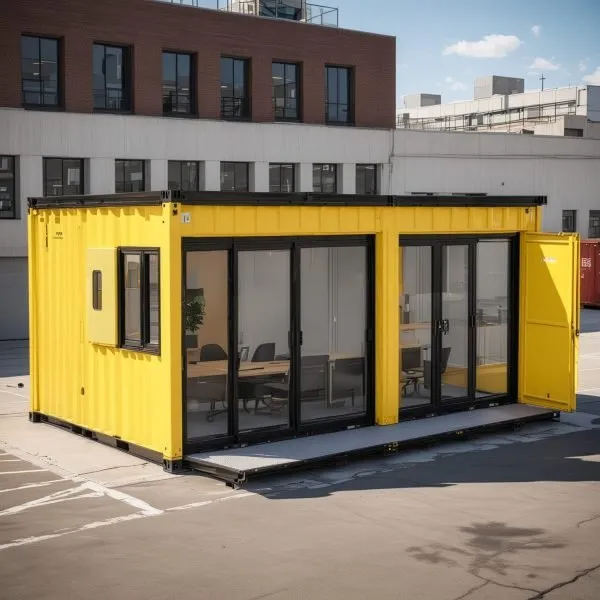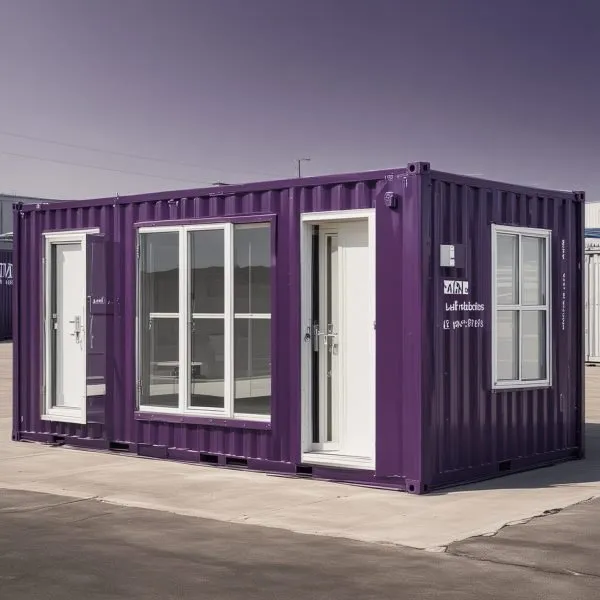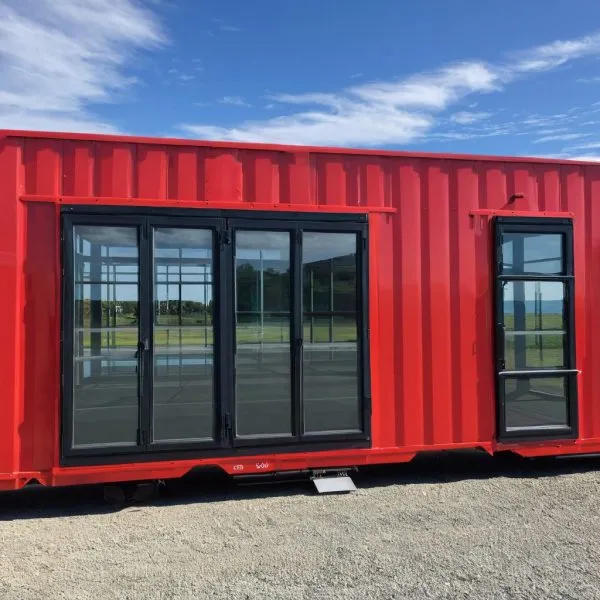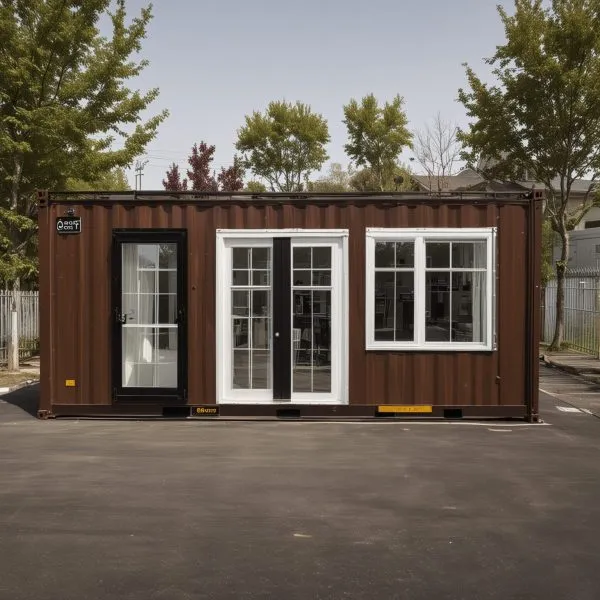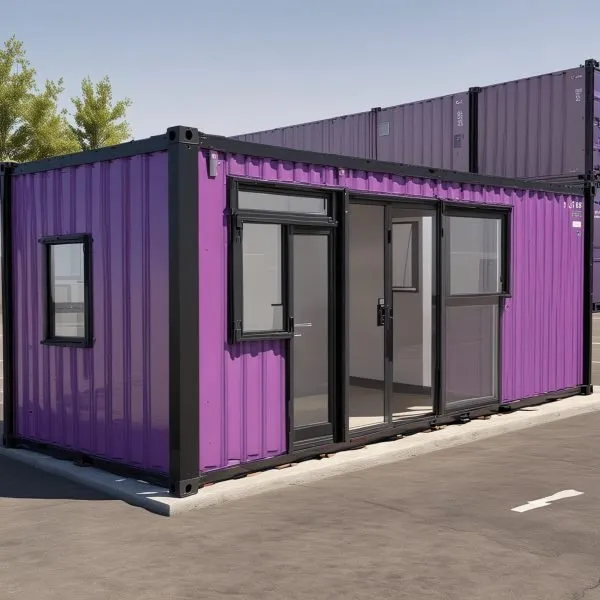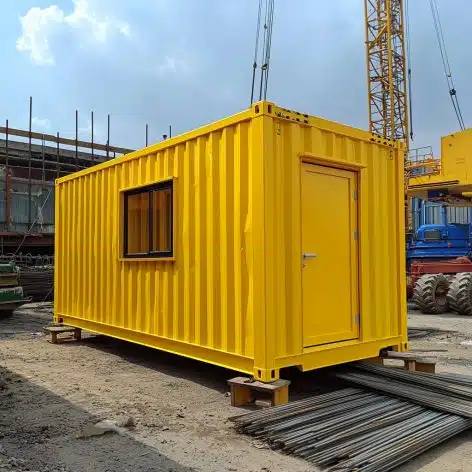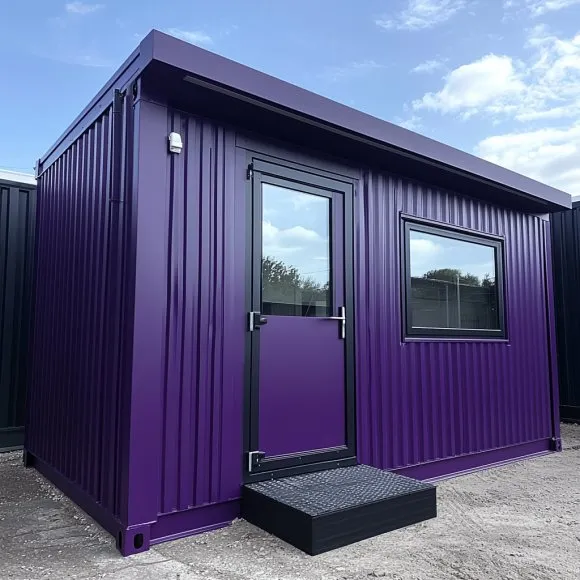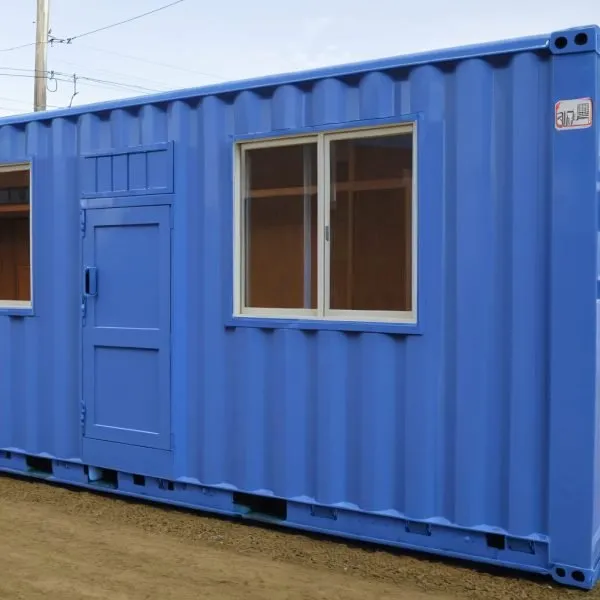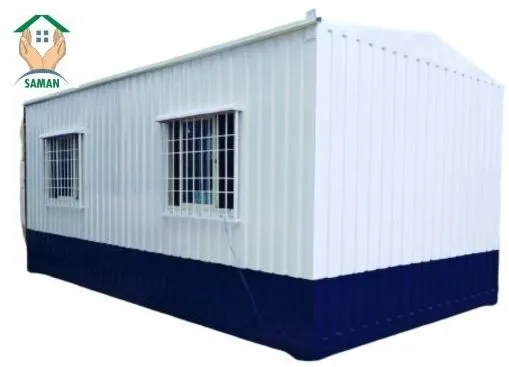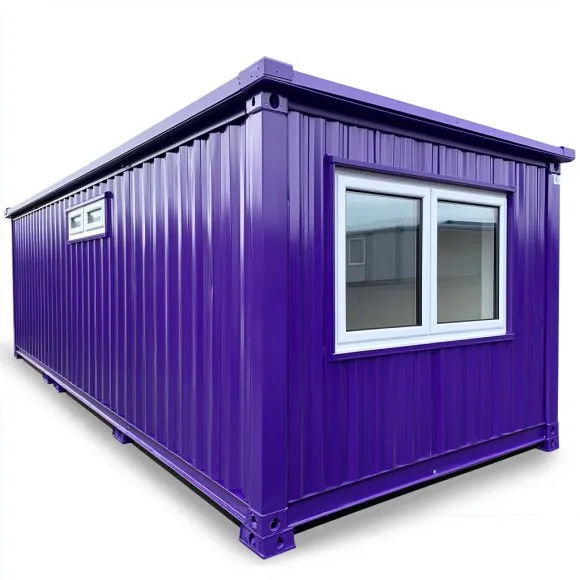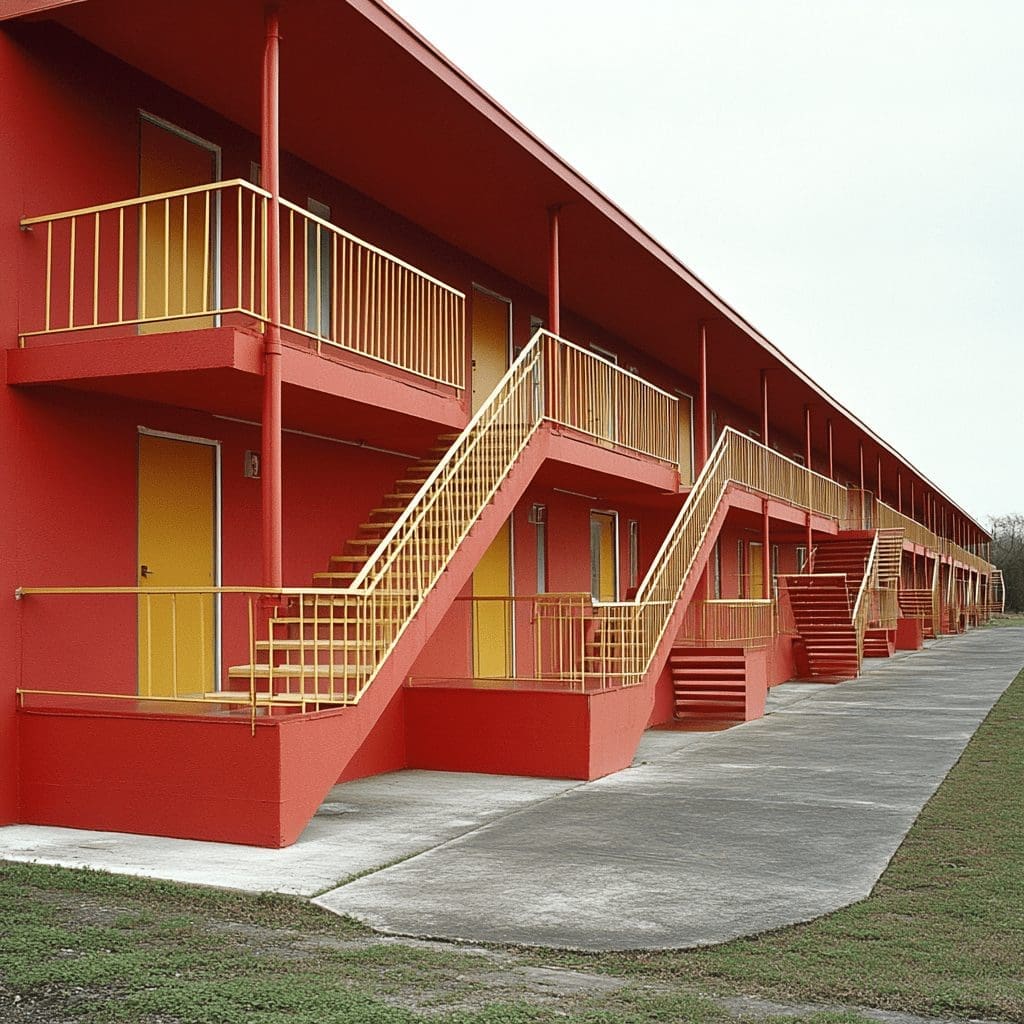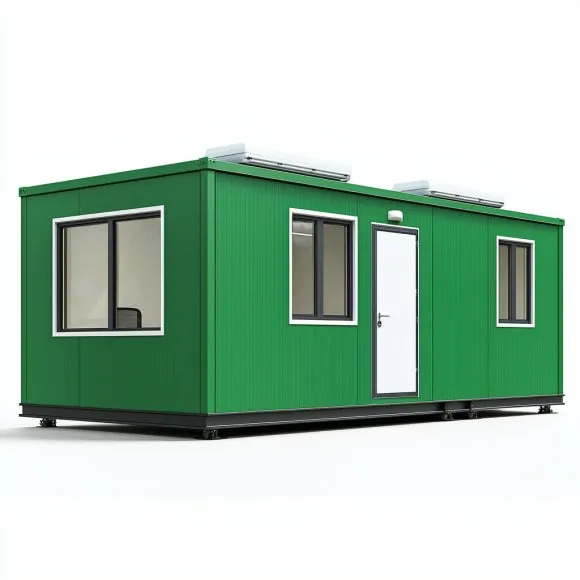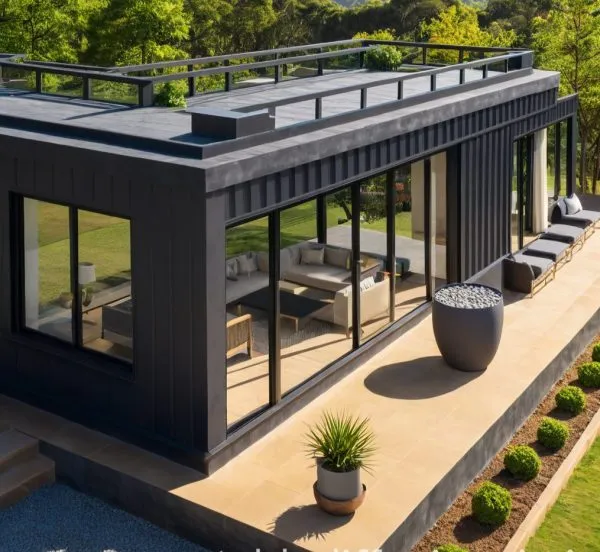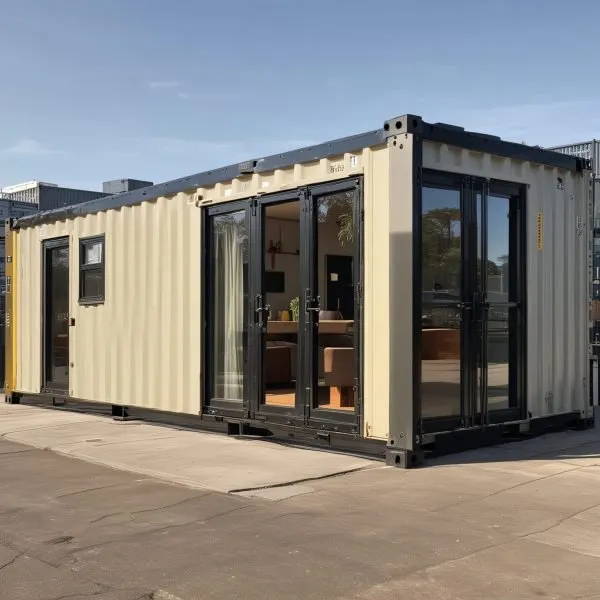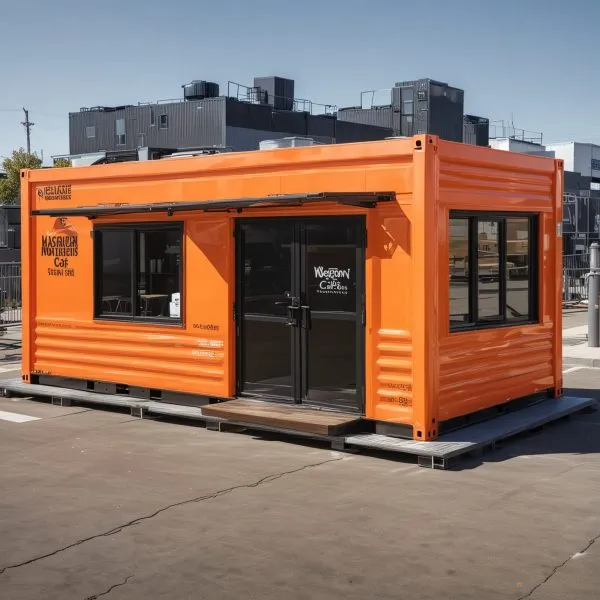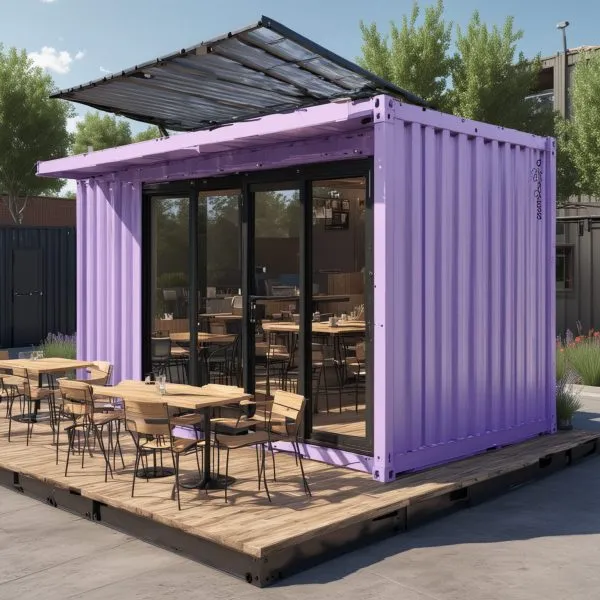What Are the Key Benefits of Container Living Homes?

Shipping containers have become a vital part of global trade, transporting goods across oceans and continents. Surprisingly, out of the 17 million shipping containers worldwide, less than 33% are in active use. This leaves a vast number of unused containers, representing a significant waste of durable resources. Given the sturdy nature of these containers, finding new purposes for them is not only practical but also environmentally responsible.
A very eco-friendly trend that’s emerging is shipping container homes. These have been repurposed so old resources are useful once again.
Are you curious about these homes? What are the key benefits of container living homes? Read on to find out.
Introduction: The Rise of Container Living Homes
Recently, a trend has emerged that transforms these containers into living spaces. Known as “Container Living Homes,” this concept is gaining popularity as a sustainable and innovative housing solution. These homes, repurposed from old shipping containers, offer numerous benefits that make them an attractive option for modern living. From eco-friendliness to unique design features, Container Living Homes provide an intriguing alternative to traditional housing.
Are you curious about the advantages of Container Living Homes? In this article, we will explore the key benefits of this modern housing solution, including its environmental impact, construction speed, and versatility. By the end, you’ll understand why Container Living Homes might be the perfect choice for your next residence.

black shipping container home in a desert landscape, with a simple, modern design
Container Living Homes: A Sustainable Solution
Recently, a trend has emerged that transforms these containers into living spaces. Known as “Container Living Homes,” this concept is gaining popularity as a sustainable and innovative housing solution. These homes, repurposed from old shipping containers, offer numerous benefits that make them an attractive option for modern living. From eco-friendliness to unique design features, Container Living Homes provide an intriguing alternative to traditional housing.
Container Living Homes are not just a fad; they are a response to growing concerns about environmental sustainability. As people become more aware of the impact their choices have on the planet, the appeal of living in a home that minimizes waste and repurposes existing materials is undeniable. In this article, we will explore the key benefits of this modern housing solution, including its environmental impact, construction speed, and versatility. By the end, you’ll understand why Container Living Homes might be the perfect choice for your next residence.
Moreover, Container Living Homes are adaptable to various climates and locations. Whether you’re looking for a home in the mountains, by the beach, or in an urban setting, these homes can be customized to meet your needs. They offer a practical solution for those who value flexibility, durability, and sustainability. Let’s delve into the many advantages of Container Living Homes and why they are becoming a popular choice for homeowners around the world.
Interested in alternatives like portable cabins or container offices? Explore portable cabin and container office solutions that can offer flexible and cost-effective options for your space needs.
They’re Eco-Friendly: A Green Alternative
Container Living Homes represent a significant step towards environmental sustainability. With millions of shipping containers lying idle across the globe, converting them into homes prevents waste and reduces the need for new construction materials. By repurposing these sturdy containers, we can contribute to a greener planet while enjoying a unique and modern living space.
The world faces enormous challenges in managing waste. For example, in India, over 1.50 lakh metric tons of solid waste are generated daily, with nearly 15,000 tons remaining exposed each day. This level of waste is unsustainable and puts tremendous pressure on natural resources. By choosing Container Living Homes, individuals can help mitigate this environmental crisis by reducing the demand for new building materials and repurposing existing resources.
Each shipping container weighs over 4 tons, made from robust steel that can withstand harsh conditions. By turning just one container into a living space, you prevent a significant amount of waste from ending up in landfills. Additionally, building a Container Living Home requires fewer materials, such as cement and wood, which further minimizes your environmental footprint. This eco-friendly approach makes Container Living Homes a smart choice for those who care about the planet.
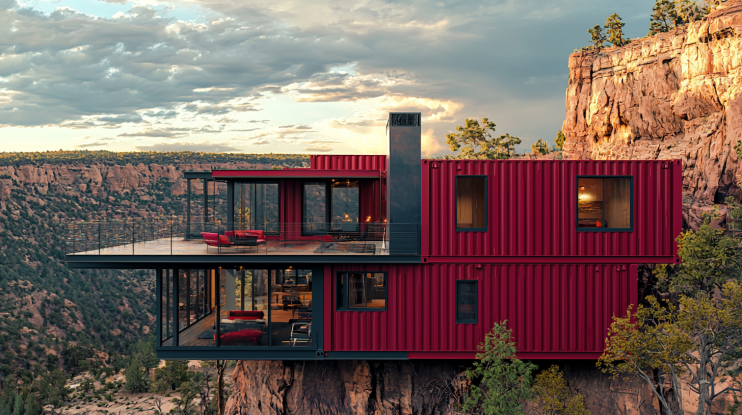
deep maroon shipping container home located on the edge of a cliff
Reducing Carbon Footprint with Container Living Homes
One of the most critical environmental benefits of Container Living Homes is the reduction of the carbon footprint. Traditional construction methods involve the use of materials like concrete, brick, and steel, which have a significant environmental impact. The production of these materials contributes to carbon emissions, which are a leading cause of climate change. By using repurposed shipping containers, you can drastically reduce the carbon footprint associated with building a new home.
The construction industry is responsible for a substantial portion of global carbon emissions. However, by choosing Container Living Homes, you are actively participating in reducing these emissions. Shipping containers are already manufactured and have served their primary purpose. Repurposing them into homes eliminates the need for producing new construction materials, thereby reducing the overall carbon emissions associated with building.
Furthermore, the energy required to convert a shipping container into a home is significantly lower than that needed to build a traditional house from scratch. This energy efficiency translates into a lower carbon footprint, making Container Living Homes an environmentally responsible choice. By opting for a Container Living Home, you are contributing to a more sustainable future while enjoying the benefits of a unique and stylish living space.
Preserving Natural Resources with Container Living Homes
Another significant advantage of Container Living Homes is the preservation of natural resources. Traditional home construction often involves the extensive use of timber, which contributes to deforestation and the depletion of natural forests. In contrast, Container Living Homes require minimal use of wood and other natural resources, helping to preserve these vital ecosystems.
Forests play a crucial role in maintaining the balance of our environment. They absorb carbon dioxide, provide habitat for wildlife, and contribute to the water cycle. However, the demand for timber in the construction industry has led to widespread deforestation, which has severe consequences for the planet. By choosing Container Living Homes, you are reducing the demand for timber and helping to protect these essential natural resources.
In addition to preserving forests, Container Living Homes also reduce the need for other natural resources, such as water and minerals, which are used in traditional construction. The construction process for a Container Living Home is much less resource-intensive, making it a more sustainable option. By opting for a Container Living Home, you are making a conscious choice to protect the environment and preserve the planet’s natural resources for future generations.
Curious about the cost of similar structures like porta cabins? Check out this detailed guide on porta cabin pricing to understand the investment involved and how it compares to container homes.

green shipping container home nestled in a dense forest
They Have Quick Construction Times
One of the standout benefits of Container Living Homes is their quick construction times. Traditional homes often take months, or even years, to build, depending on the design’s complexity and the availability of materials. In contrast, Container Living Homes, especially those available in prefabricated forms, can be completed in a fraction of that time, offering a faster and more efficient housing solution.
For those who need to move quickly, whether due to work relocation or personal circumstances, the speed of constructing a Container Living Home is incredibly advantageous. Some companies can deliver a fully constructed home in as little as 10 weeks, significantly reducing the waiting period compared to traditional construction. This rapid turnaround allows for a smooth transition, minimizing the stress and inconvenience of temporary living arrangements.
The prefabrication process is a key factor in the speed of construction. Container Living Homes are often built in controlled factory environments, where weather and other external factors do not cause delays. Once completed, these homes are transported to the desired location, ready for installation. This streamlined process not only saves time but also reduces costs, making Container Living Homes an appealing option for those who need a quick and reliable housing solution.
Advantages of Prefabricated Container Living Homes
Prefabricated Container Living Homes offer several advantages beyond just quick construction times. One of the primary benefits is the consistency in quality. Since these homes are built in a controlled environment, the risk of errors and defects is minimized. This results in a higher-quality home that meets or exceeds industry standards.
In addition to quality control, prefabrication also allows for greater customization. Homeowners can choose from a variety of designs and layouts, tailoring their Container Living Home to their specific needs and preferences. This level of customization is often not possible with traditional construction methods, where changes to the design can be costly and time-consuming.
Another advantage of prefabricated Container Living Homes is the reduction in construction waste. In traditional construction, a significant amount of material is often wasted due to inefficiencies in the building process. However, in a factory setting, materials are used more efficiently, and waste is minimized. This not only reduces the environmental impact of the construction process but also lowers the overall cost of building the home.
Need storage solutions that protect against rust and weather? Discover our transportable container storage options designed to keep your goods safe and secure in any environment.

lavender shipping container home set in a suburban garden
Efficiency in Construction: Time and Cost Savings
The efficiency of constructing Container Living Homes extends beyond just the speed of completion. The streamlined process also translates into cost savings for the homeowner. Traditional construction projects often run over budget due to unexpected delays and complications. However, the controlled environment of prefabrication reduces these risks, resulting in a more predictable and affordable construction process.
The cost savings associated with Container Living Homes are not limited to the construction phase. Because these homes are typically smaller and more energy-efficient, they also result in lower utility bills over time. This makes Container Living Homes an economical choice for those looking to reduce their living expenses without sacrificing comfort or style.
In addition to being cost-effective, the efficient construction process of Container Living Homes also reduces the disruption to your life. Traditional home construction can be a lengthy and stressful process, often requiring you to live in temporary accommodations while your home is being built. However, with a Container Living Home, the construction process is much shorter, allowing you to move into your new home sooner and with less hassle.
They’re Easy to Move: Flexibility and Freedom
The mobility of Container Living Homes is one of their most attractive features. Unlike traditional homes, which are fixed to a single location, Container Living Homes can be relocated with relative ease. This flexibility is ideal for individuals who do not want to be tied down to one place and prefer the freedom to move as their circumstances change.
Shipping containers are designed for transport, making them naturally mobile. When converted into homes, they retain this mobility, allowing you to move your living space to a new location whenever necessary. This feature is particularly beneficial for those with a dynamic lifestyle or a career that requires frequent relocations. With a Container Living Home, you can enjoy the comforts of home without the long-term commitment to a specific location.
Moving a Container Living Home is straightforward. Specialized equipment, such as cranes and flatbed trucks, can easily lift and transport the container to a new site. Unlike traditional homes, which require extensive disassembly and reassembly during a move, Container Living Homes remain intact, ensuring a seamless transition. This ease of mobility makes Container Living Homes an excellent choice for those seeking flexibility and convenience in their living arrangements.

orange shipping container home placed on a hillside vineyard
The Benefits of Mobility in Modern Living
In today’s fast-paced world, the ability to move easily and adapt to changing circumstances is more important than ever. Container Living Homes provide this flexibility, allowing homeowners to relocate their living space as needed. Whether you’re pursuing new career opportunities, seeking a change of scenery, or simply wanting to explore different parts of the country, a Container Living Home gives you the freedom to do so without the stress and expense of traditional home moves.
This mobility is not just beneficial for individuals but also for families. As children grow and family needs change, the ability to move to a new location can provide better access to schools, healthcare, and other essential services. With a Container Living Home, you can easily relocate to an area that best suits your family’s needs, ensuring that everyone has access to the opportunities they deserve.
Moreover, the mobility of Container Living Homes makes them an ideal choice for those who value adventure and exploration. Imagine being able to take your home with you as you travel to new and exciting destinations. With a Container Living Home, this dream can become a reality. Whether you’re exploring national parks, coastal towns, or bustling cities, your home can go with you, providing comfort and familiarity no matter where you are.
Minimal Environmental Impact During Relocation
One of the lesser-known benefits of Container Living Homes is the minimal environmental impact associated with relocating these homes. Traditional home moves often require significant resources and can result in considerable waste and disruption to the environment. However, relocating a Container Living Home is a much more eco-friendly process.
Because Container Living Homes are self-contained and do not require disassembly, the amount of waste generated during a move is minimal. Additionally, the energy required to transport a Container Living Home is significantly lower than that needed to move a traditional house. This reduced environmental impact makes Container Living Homes a sustainable choice for those who value both mobility and environmental responsibility.
In conclusion, the mobility of Container Living Homes offers unparalleled flexibility and freedom, allowing you to adapt to changing circumstances with ease. Whether you’re relocating for work, seeking new adventures, or simply wanting a change of scenery, a Container Living Home provides the perfect solution. With minimal environmental impact and the ability to move your home intact, Container Living Homes are an ideal choice for modern, eco-conscious living.

pink shipping container home in a vibrant urban neighborhood
There Are Little to No Unexpected Costs
When building a traditional home, unexpected costs can arise at any stage of the construction process. These costs, which may include weather-related delays or unforeseen structural issues, can significantly increase the overall budget. However, with Container Living Homes, the cost predictability is one of their most appealing aspects. Prefabricated Container Living Homes offer a clear and upfront cost structure, minimizing the risk of budget overruns.
The primary advantage of prefabrication is the ability to receive an accurate cost estimate before construction begins. Because these homes are built in a controlled factory environment, variables that typically affect traditional construction, such as weather or site conditions, are eliminated. This controlled process ensures that the final cost remains close to the initial estimate, providing peace of mind and financial security for homeowners.
Although Container Living Homes may not always be cheaper than traditional homes, the certainty of knowing your final cost can make them a worthwhile investment. The reduction in unexpected expenses, combined with the quick construction times and quality control in the factory setting, makes Container Living Homes an attractive option for those seeking a cost-effective and reliable housing solution.
Predictability and Transparency in Costs
One of the most significant advantages of Container Living Homes is the transparency in costs. When you choose a Container Living Home, you know exactly what you’re paying for. This predictability is a stark contrast to traditional home construction, where costs can quickly spiral out of control due to unforeseen issues.
With Container Living Homes, the prefabrication process ensures that all costs are accounted for upfront. This includes everything from the materials used to the labor involved in building the home. By having a clear and detailed estimate from the start, homeowners can budget more effectively and avoid the financial strain that often comes with traditional home construction.
Furthermore, the predictability of costs in Container Living Homes extends to the long-term expenses of homeownership. Because these homes are typically smaller and more energy-efficient, the ongoing costs of maintaining and running the home are lower. This includes utility bills, maintenance, and repairs, all of which can add up over time. By choosing a Container Living Home, you can enjoy the peace of mind that comes with knowing your expenses will remain manageable and predictable.

rustic brown shipping container home situated in a mountainous area
Financial Security with Container Living Homes
Financial security is a critical consideration for any homeowner. The predictability and transparency of costs associated with Container Living Homes provide a level of financial security that is often lacking in traditional home construction. By knowing your expenses upfront and avoiding unexpected costs, you can plan your finances with confidence.
In addition to predictable costs, Container Living Homes offer long-term financial benefits. The lower utility costs, reduced maintenance expenses, and potential for energy savings make these homes an economical choice for budget-conscious homeowners. Over time, the savings associated with owning a Container Living Home can add up, providing you with more financial freedom and security.
Moreover, the durability of Container Living Homes means that they are likely to retain their value over time. Unlike traditional homes, which may require significant repairs and renovations as they age, Container Living Homes are built to last. This long-term durability reduces the need for costly repairs and ensures that your home remains a valuable asset for years to come. By choosing a Container Living Home, you are making a sound financial investment in your future.
They Have a Unique Design: Stand Out with Style
For those who value individuality and creativity, Container Living Homes offer a unique and distinctive design. Unlike traditional homes, which often follow conventional architectural styles, Container Living Homes stand out with their modern and minimalist aesthetic. The transformation of a simple shipping container into a stylish living space reflects a blend of innovation and practicality, making it an appealing choice for those who want to live differently.
The design of Container Living Homes is characterized by simplicity and functionality. The rectangular shape of the shipping container provides a clean and modern look, appealing to those who appreciate minimalist architecture. However, this simplicity does not mean sacrificing comfort or luxury. With thoughtful design choices, a Container Living Home can be both stylish and functional, offering all the amenities of a traditional home in a more compact and efficient space.
Beyond aesthetics, the modular nature of Container Living Homes allows for easy customization and expansion. If you need more space in the future, additional containers can be seamlessly integrated into your existing home, creating a larger living area without the need for extensive renovations. This flexibility in design makes Container Living Homes an excellent choice for those who want a home that can grow and adapt to their needs over time.

shipping container home in a bright white color, placed in a coastal setting with a panoramic view of the ocean
Personalizing Your Container Living Home
One of the most exciting aspects of choosing a Container Living Home is the ability to personalize it to your tastes and needs. Unlike traditional homes, which often come with fixed layouts and designs, Container Living Homes offer endless possibilities for customization. Whether you prefer a sleek, modern look or a cozy, rustic feel, you can design your Container Living Home to reflect your personality and lifestyle.
Personalization can extend to both the interior and exterior of the home. Inside, you can choose from a variety of layouts, finishes, and fixtures to create a space that is uniquely yours. From open-plan living areas to compact, efficient kitchens, the design possibilities are virtually limitless. You can also incorporate features such as large windows, skylights, and custom-built furniture to make the most of the space and create a home that is both functional and stylish.
On the exterior, you can choose from a range of cladding materials, colors, and landscaping options to enhance the curb appeal of your Container Living Home. Whether you want a sleek, industrial look or a more natural, organic aesthetic, you can tailor the exterior design to suit your tastes. With the ability to personalize every aspect of your Container Living Home, you can create a living space that is truly one-of-a-kind.
Innovative Design Features of Container Living Homes
Container Living Homes are not just about minimalist design; they also offer a range of innovative features that enhance both functionality and aesthetics. One of the key design elements of these homes is their modularity, which allows for creative layouts and flexible living spaces. By stacking and arranging containers in various configurations, you can create multi-level homes, open-plan interiors, and even rooftop gardens.
Another innovative feature of Container Living Homes is the use of sustainable materials and technologies. From energy-efficient insulation to solar panels and rainwater harvesting systems, these homes are designed with sustainability in mind. These features not only reduce the environmental impact of the home but also enhance its comfort and livability. For example, high-quality insulation helps to regulate the temperature inside the home, making it more energy-efficient and comfortable year-round.
In addition to sustainability, Container Living Homes can also incorporate smart home technologies. From automated lighting and climate control to security systems and energy monitoring, these homes can be equipped with the latest tech to enhance convenience and efficiency. By integrating smart home features into your Container Living Home, you can enjoy a modern, connected living experience that meets the demands of 21st-century life.

shipping container home in a charcoal gray color, located in an urban environment
They’re Very Durable: Built to Last
Durability is a key advantage of Container Living Homes. Shipping containers are built to endure the harshest conditions, including rough seas and extreme weather. When these containers are repurposed into homes, they retain their strength and resilience, providing a safe and secure living environment. This durability ensures that your Container Living Home will stand the test of time, offering protection and peace of mind.
Shipping containers are constructed from Corten steel, a material known for its strength and resistance to corrosion. This makes Container Living Homes particularly suitable for a variety of climates, including coastal areas where saltwater exposure can be a concern. The robust construction of these homes means they require less maintenance than traditional houses, reducing the long-term costs associated with upkeep.
In addition to their structural integrity, Container Living Homes are also highly secure. The solid steel construction provides excellent protection against natural disasters such as heavy winds, storms, and even fire. With the right insulation and ventilation, a Container Living Home can offer a comfortable and safe living environment, making it a reliable choice for those seeking a durable and long-lasting residence.
Weather Resistance and Climate Adaptability
One of the standout features of Container Living Homes is their ability to withstand various weather conditions. Whether you live in an area prone to hurricanes, heavy snowfall, or extreme heat, a Container Living Home can be adapted to suit your local climate. The strength of the steel construction ensures that the home can withstand strong winds and heavy rain, providing a safe and secure living environment.
For those living in coastal areas, the resistance of Corten steel to saltwater corrosion is particularly important. Traditional homes in these areas often require regular maintenance and repairs due to the corrosive effects of salt air. However, the durability of Corten steel means that Container Living Homes are less susceptible to corrosion, reducing the need for frequent maintenance and extending the lifespan of the home.
In addition to weather resistance, Container Living Homes can be equipped with features that enhance their adaptability to different climates. For example, high-performance insulation can help to regulate the temperature inside the home, keeping it cool in the summer and warm in the winter. Solar panels and energy-efficient windows can further enhance the home’s climate adaptability, making it a comfortable and sustainable living space in any environment.

shipping container home in a deep navy blue color, set on a wooded hillside
Long-Term Durability and Low Maintenance Costs
The long-term durability of Container Living Homes is one of their most significant advantages. Unlike traditional homes, which may require significant repairs and renovations as they age, Container Living Homes are designed to last. The strength of the steel construction, combined with the resistance to corrosion and weather damage, ensures that these homes remain in excellent condition for many years.
This durability translates into lower maintenance costs over the life of the home. Traditional homes often require regular maintenance, such as painting, roofing repairs, and structural reinforcements, all of which can add up over time. However, the robust construction of Container Living Homes means that these maintenance tasks are less frequent and less costly. This reduces the overall cost of homeownership, making Container Living Homes a financially sound choice.
In addition to reducing maintenance costs, the durability of Container Living Homes also enhances their resale value. Because these homes are built to last, they are likely to retain their value over time, making them a good investment for homeowners. Whether you’re planning to live in your Container Living Home for many years or eventually sell it, the long-term durability and low maintenance costs make it a wise financial decision.
Your Cost of Utilities Can Be Lower: Energy Efficiency
One of the practical benefits of Container Living Homes is the potential for lower utility costs. Due to their typically smaller size, these homes require less energy to heat and cool, leading to significant savings on utility bills. By choosing a Container Living Home, you can enjoy a more energy-efficient lifestyle, reducing both your environmental impact and your monthly expenses.
The compact nature of Container Living Homes means that there is less space to maintain at a comfortable temperature. This reduced space results in lower energy consumption, as heating and cooling systems do not need to work as hard as they would in a larger traditional home. Additionally, Container Living Homes can be designed with energy efficiency in mind, incorporating features such as high-quality insulation, energy-efficient windows, and solar panels.
Beyond energy efficiency, the smaller footprint of Container Living Homes also means less water usage and lower costs for other utilities, such as electricity and gas. By investing in energy-efficient appliances and fixtures, you can further reduce your utility bills, making Container Living Homes not only a sustainable choice but also an economical one. This combination of lower utility costs and reduced environmental impact makes Container Living Homes an attractive option for those looking to live more sustainably.

shipping container home in a suburban neighborhood, featuring two connected containers
Incorporating Renewable Energy in Container Living Homes
One of the most effective ways to reduce the cost of utilities in a Container Living Home is by incorporating renewable energy sources. Solar panels, for example, can be installed on the roof of the container to harness the power of the sun. This not only reduces your reliance on traditional energy sources but also lowers your monthly electricity bills.
Solar energy is a particularly good fit for Container Living Homes because of their compact size and flat roof surfaces, which are ideal for solar panel installation. With the right setup, you can generate enough electricity to power your entire home, reducing or even eliminating your utility bills. Additionally, any excess energy generated by the solar panels can be stored in batteries for later use or sold back to the grid, providing an additional financial benefit.
Another renewable energy option for Container Living Homes is the use of wind power. Small wind turbines can be installed on or near the home to generate electricity. Like solar panels, wind turbines can significantly reduce your reliance on traditional energy sources and lower your utility costs. By incorporating renewable energy into your Container Living Home, you can enjoy the benefits of a sustainable, cost-effective living space.
Water Conservation and Efficient Water Use
In addition to energy efficiency, Container Living Homes offer opportunities for water conservation. The smaller size of these homes means that they require less water for everyday activities such as bathing, cooking, and cleaning. By incorporating water-saving fixtures and appliances, you can further reduce your water usage and lower your utility bills.
One way to conserve water in a Container Living Home is by installing low-flow faucets and showerheads. These fixtures use less water than traditional ones, reducing your overall water consumption without sacrificing performance. Additionally, dual-flush toilets allow you to choose between a low or high flush, depending on the need, further reducing water usage.
Rainwater harvesting is another effective way to conserve water in a Container Living Home. By collecting and storing rainwater, you can use it for various non-potable purposes such as irrigation, flushing toilets, and washing clothes. This reduces your reliance on municipal water supplies and lowers your water bills. With the right water-saving strategies, you can make your Container Living Home even more efficient and sustainable.

multi-colored shipping container home made from stacked containers
Consider Container Living Homes as Your Next Place of Residence
Container Living Homes offer a range of benefits that make them an attractive alternative to traditional housing. From their eco-friendly nature to their quick construction times and unique designs, these homes provide a modern and sustainable living solution that aligns with the values of today’s homeowners. If you’re considering a new place to live, a Container Living Home could be the perfect choice.
The appeal of Container Living Homes goes beyond their practicality. They represent a shift towards more sustainable and innovative living practices, offering a way to reduce waste and repurpose materials that would otherwise go unused. By choosing a Container Living Home, you’re not only making a positive impact on the environment but also enjoying the benefits of a well-built, durable, and stylish home.
If you’re ready to explore the world of Container Living Homes, there are many options available to suit your needs. Companies like Saman Portable offer a range of prefabricated Container Living Homes that can be customized to your preferences. Whether you’re looking for a small, cozy space or a larger, more luxurious home, there’s a Container Living Home out there that’s perfect for you. Take the next step towards sustainable living and consider a Container Living Home as your next residence.
Conclusion: The Future of Sustainable Living
Container Living Homes represent the future of sustainable living. As more people become aware of the environmental impact of traditional housing, the demand for eco-friendly alternatives is growing. Container Living Homes offer a solution that is both practical and innovative, providing a way to live sustainably without sacrificing comfort or style.
By choosing a Container Living Home, you are making a positive contribution to the environment. You are reducing waste, conserving natural resources, and lowering your carbon footprint. At the same time, you are enjoying the benefits of a durable, energy-efficient home that can be customized to meet your needs.
The future of housing lies in sustainable solutions like Container Living Homes. As we move towards a more eco-conscious society, these homes will play a crucial role in reducing the environmental impact of our lifestyles. Whether you are looking for a new home or simply exploring your options, consider a Container Living Home as a smart, sustainable choice for modern living.
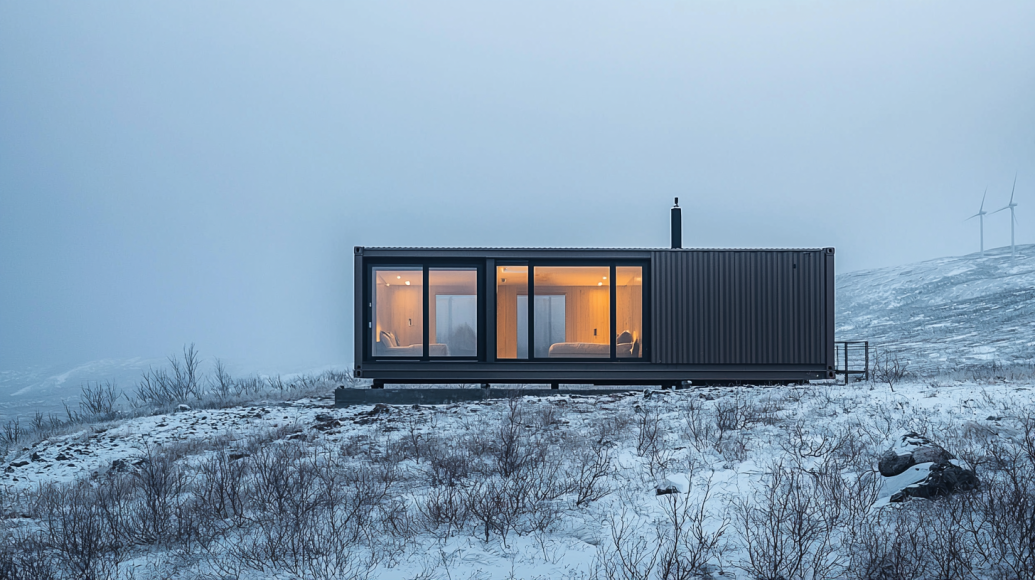
shipping container home in a metallic bronze color, set in a remote Arctic tundra
FAQs on Container Homes
Are container homes legal in India?
Container homes are legal in India, but they are subject to local building regulations and zoning laws. While there are no specific laws addressing container homes, they must comply with the general construction codes applicable to residential buildings. This includes obtaining necessary permits from local authorities, ensuring the structure is safe, and meets all environmental guidelines. The concept is still relatively new in India, and legal acceptance may vary by region, so it’s important to consult with local authorities before starting construction.
What size is a container house?
The size of a container house depends on the number of containers used and their arrangement. Standard shipping containers come in two sizes: 20 feet by 8 feet, offering 160 square feet of space, and 40 feet by 8 feet, offering 320 square feet. These containers can be combined or stacked to create larger living spaces. For instance, multiple 40-foot containers can be used to build multi-story homes or larger single-level houses.
Do shipping containers rust?
Yes, shipping containers are made of steel and can rust, especially when exposed to moisture and salty environments. However, most containers are made from Corten steel, which is designed to resist corrosion better than regular steel. Proper maintenance, such as applying anti-corrosion coatings and ensuring good drainage and ventilation, can significantly reduce the risk of rust and extend the container’s lifespan.
How many square feet is a container?
A 20-foot container has approximately 160 square feet of floor space, while a 40-foot container offers around 320 square feet. These containers can be modified or combined to create larger living areas, depending on the design requirements.
What is the price of a 40 feet container?
The price of a 40-foot container in India typically ranges between INR 2 to 5 lakhs, depending on factors like condition (new or used), material (Corten steel is preferred), and the seller. New containers tend to be on the higher end of this range, while used containers, especially those with some wear, are more affordable.
How many bedrooms can fit in a 40ft container?
A 40-foot container can be designed to fit one or two small bedrooms, depending on the layout. A single spacious bedroom with an attached bathroom is common in such containers. However, with efficient space planning, it is possible to fit two small bedrooms, each accommodating a bed and basic furniture.
How many containers do I need for a 4 bedroom house?
To build a 4-bedroom house, you would generally need between 4 to 6 containers, depending on the design and room sizes. For example, stacking or arranging four 40-foot containers could create a two-story home with ample space for four bedrooms, a living area, kitchen, and bathrooms.
How many sofas fit in a container?
In a 40-foot container, you can fit approximately 10 to 12 standard-sized sofas, depending on their dimensions and the way they are arranged. This makes containers ideal for bulk storage or transportation of large furniture items.
Is a container good for a house?
Yes, containers can be an excellent choice for building a house. They are durable, cost-effective, and eco-friendly since they repurpose used materials. Container homes can be designed to be energy-efficient and are capable of withstanding extreme weather conditions. However, it’s important to ensure proper insulation, ventilation, and structural modifications to meet living standards.
How much does it cost to build a container home in India?
The cost of building a container home in India can range from INR 10 to 25 lakhs or more, depending on factors like the number of containers used, the complexity of the design, interior finishes, and location. This includes the cost of the containers themselves, modifications, insulation, electrical and plumbing installations, and interior design.
What is the lifespan of a container home?
A well-maintained container home can last for 25 to 30 years or more. The lifespan depends on factors such as the quality of the container, how it is maintained, and the environmental conditions it is exposed to. Regular maintenance, including checking for rust, sealing leaks, and maintaining the structural integrity, can prolong the life of the container home.
How many cars can fit in a 40 ft container?
A 40-foot container can typically fit two standard-sized cars. The exact number may vary depending on the size and type of the cars, as well as how they are positioned inside the container.
How many fridges fit in a shipping container?
A 40-foot container can fit approximately 25 to 30 standard-sized refrigerators, depending on their dimensions and how they are arranged. This makes containers suitable for transporting large quantities of household appliances.
Can two cars fit in a 20ft container?
Fitting two standard-sized cars in a 20-foot container is generally not feasible. Typically, only one standard-sized car can fit in a 20-foot container due to the limited length and width.
Looking for more information or need help with your project? Contact us for expert advice and solutions tailored to your specific needs.
 Container Cafe
Container Cafe

